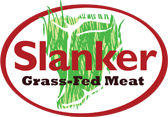Beef Mega Myths
Column $102
Even in this propaganda age, once in awhile the truth comes out. This time it was a myth smashing article published in The Washington Post.
For decades the beef industry has been under assault as one of the primary nutritional evils. But it’s not just beef that’s blamed for causing chronic diseases, but all farmers, ranchers, and food processors are maligned by do-gooder agendas laced with scaremongering instead of science. For instance the movie, Food Inc., used myths, innuendo, and lies to attack nearly every phase of the food industry. And the producers of that movie made millions while offering little in the way of valid information that could make a difference in America’s health crisis. Ironically, they claimed agriculturists and food processors were evil because they make money.
The Washington Post article debunked these ten myths.
1. Most farms are corporate-owned
Farms and ranches are primarily owned by families. They’re dedicated risk takers who work hard and smart doing tasks most Americans refuse to do.
2. Food is expensive
America’s food costs are the world’s lowest compared to income per capita.
3. Farming is low tech
Agriculture has always been on the cutting edge of technology.
4. Organic pesticides are not toxic
All pesticides–manmade, natural, or organic–are toxic.
5. Organic farmers and conventional farmers don’t get along
Organic and conventional farming differ only by small degrees and some farmers do both.
6. GMOs are dangerous
Humans have eaten about every single gene in existence and have been modifying plant and animal genetics for thousands of years.
7. Only meat with a “hormone-free” label is hormone free
All animals and plants have naturally occurring hormones.
8. Only meat with an “antibiotic-free” label is antibiotic free
By law only antibiotic-free meat can be sold for human consumption.
9. Foods labeled “natural” are produced differently
“Natural” labels on foods are meaningless and are not an indication of quality or safety.
10. Added chemicals are the biggest threat to food safety
Every food consists of chemical compounds. Chemicals and bacterial contaminants cause far fewer health issues than many foods themselves.
These ten myths scratch the surface and to them I’ll add these truths:
Green leaves are the foundation food for animal life which is why they must be at the bottom of the food chain. That’s why vegetables rank high on the healthy food list. Unfortunately vegetable farming requires plowing and fallow fields which release carbon dioxide and create other environmental issues.
Grains (seeds of annual grasses) do not meet nutritional needs. And, like vegetable farming, they create severe environmental problems.
The most earth friendly food production relies on year-round pastureland (grasses, trees, and shrubs) that trap carbon dioxide. When they’re grazed by livestock, the symbiotic cycle of life is completed.
The nutrients required by healthy animals are nearly identical to humans. Therefore grass-fed and Omega-3 meats and wild-caught seafood provide the same properly balanced profile of protein, fats, minerals, vitamins, amino acids, and sterols that humans require. Meats are also easy for humans to digest.
In order to have a good supply of the healthiest foods, consumers must incentivize producers and processors by refusing to purchase marginal or sub-par foods. Consumers vote with their dollars. This puts them in control of all food offerings. They get what they are willing to pay for.
To your health.
Ted Slanker
Ted Slanker has been reporting on the fundamentals of nutritional research in publications, television and radio appearances, and at conferences since 1999. He condenses complex studies into the basics required for health and well-being. His eBook, The Real Diet of Man, is available online.
Don't miss these links for additional reading:
10 Mega Myths about Farming to Remember on Your Next Grocery Run by Jenna Gallegos in The Washington Post
Food Inc. Review by Ted Slanker
Iowa Farmers Look to Trap Carbon in Soil by Dan Charles
Man Is an Extension of the Leafy, Green Plant by Ted Slanker




